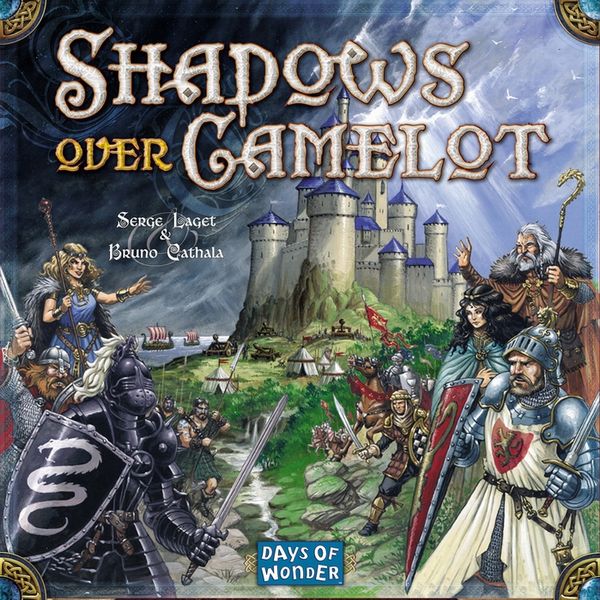Shadows over Camelot (2005) Board Game
Shadows over Camelot is a cooperative board game designed by Bruno Cathala and Serge Laget. It was released in 2005 by Days of Wonder. The game is set in the legendary realm of Camelot, where players take on the roles of the Knights of the Round Table, working together to defend the kingdom against various threats.
Game Components of Shadows over Camelot
How To Setup Shadows over Camelot
To set up Shadows over Camelot, players start by placing the main gameboard and the additional quest boards. Each player selects a Knight and receives their Coat of Arms and a set of cards. The game includes a variety of quests such as wars against the Picts and Saxons, a tournament against the Black Knight, and quests for the Holy Grail, Excalibur, and Lancelot’s Armor. Players also draw loyalty cards to determine if there is a traitor among them. The game is ready to start once all components are distributed and the initial quest conditions are set.
Gameplay Mechanics and Game Objective
Gameplay Mechanics
Game Objective
Player Experience
Playing Shadows over Camelot is a rollercoaster of panic and strategy. Each turn brings new challenges as the game’s evil mechanics advance, and players must work together to complete quests while navigating the paranoia of potentially having a traitor among them. The game requires coordination and strategic thinking to manage the multiple quests and threats simultaneously. Accusing another player of being a traitor can be a high-stakes move, as incorrect accusations can harm the team’s chances of winning.
Pros
Cons
Personal Thoughts on Shadows over Camelot
Shadows over Camelot is ideal for those who enjoy cooperative games with a twist of social deduction. It is best suited for groups of 5 players, as this balance provides the most challenging and engaging experience. While it may not hold up as strongly against newer semi-cooperative games in terms of complexity and strategic depth, its theme and core mechanics still offer a fun and challenging experience for fans of cooperative gameplay and Arthurian lore.
We are supported by our audience. When you purchase through links on our site, we may earn an affiliate commission, at no extra cost for you. Learn more.

